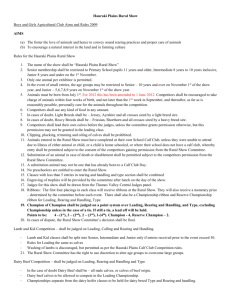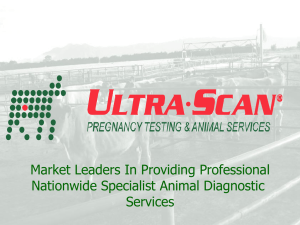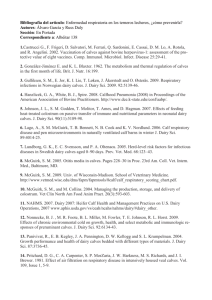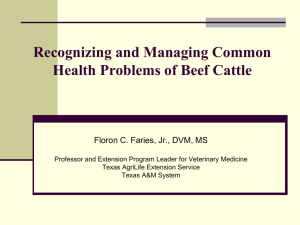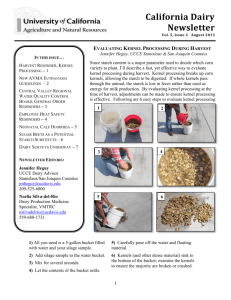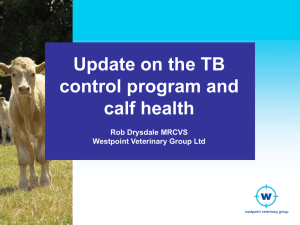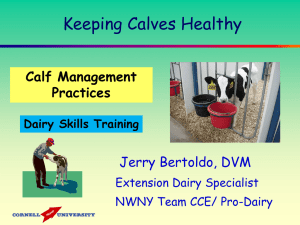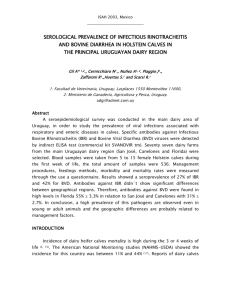Westpoint Vet Group
advertisement
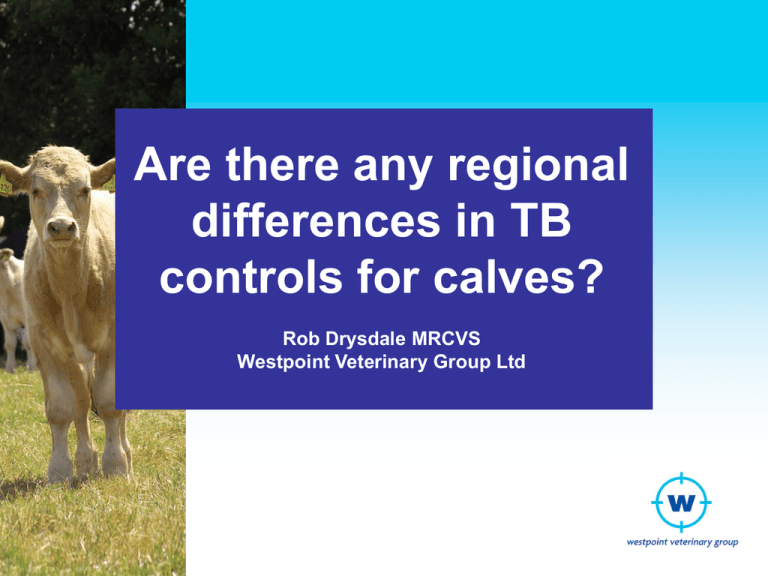
Are there any regional differences in TB controls for calves? Rob Drysdale MRCVS Westpoint Veterinary Group Ltd Who is Rob Drysdale MRCVS? • • • • Managing Director Westpoint Vet Group Ltd Farm vet for 17 years Particular interest in calf health and welfare Vet to Blade Farming SW Ltd: – Complete and integrated beef supply chain – Produced more nearly 20,000 calves last year – UK’s largest integrated beef producer Westpoint Vet Group • 16 practices across UK with 50 farm vets • Total practice over 3,000 clients • 250+ dairy farms: – More than 90,000 dairy cows (av herd 350 cows) – Low input extensive to high input intensive • Over 300,000 head of beef and youngstock: – Fattening units from 100 to 8,000 head/year – Suckler farms from 20 to 1,000 cows Background • Calf Forum Strategy Group project • Investigate the impact of TB on dairy units in different regions of the UK • Meeting with WVG Senior Vets twice yearly had raised issues of how the varying regions interpret TB annexes • Blade Farming experiences – rearing units and supplying dairy farmers Approved Quarantine Units? AQU system – works for Blade Blade Farming and AQUs • • • • Frustration for calf supply chain Richard Phelps could see potential Started in 2005 with 1 x TB approved unit Now have several sheds on several farms each with own TB licence as AQU • Capacity of around 2,000 calves per cycle • Around 1.5 cycles per AQU per year Blade Farming and AQUs • • • • • • System works with local AHVLA support Retailer and processor support Breeds – many but B&W difficult to justify Great value weaned “store” cattle Move to finishers on contract for slaughter Dedicated farmers and also occasional purchasers AQU system can work Background • WVG practices split into 5 English regions • Director or Senior Vet heads up each area • Regions have different DEFRA offices managing them • Vets and farmers frustrated through different approaches by DEFRA Vets • AHVLA – new team from 2011 Background • • • • • • • • Five distinct regions – AHVLA offices: North West = Carlisle Midlands = Stafford East Anglia = Chelmsford now Reading South West = Truro and Exeter South East = Reading 10 units SW Scotland with 10,000 cows Blade Farming – TB controls North West • • • • • • 41 dairy farms with 15,000 cows 4 holdings under TB restriction last 2 years No units currently under restriction No local TB controlled rearing available All bull calves shot Approx 400 calves shot in period Midlands • • • • 27 dairy farms with 5,700 cows 11 holdings TB restricted last 2 years 5 units currently under restriction Little support for TB controlled rearing in region and DEFRA “seems unwilling” to support • Not all bull calves shot • Approx 500 calves shot in period East Anglia • • • • 28 dairy farms with 6,900 cows No holdings TB restricted last 2 years Beef units affected with 3 under restriction Good support for TB controlled rearing in region with one specialist finishing unit in place • No bull calves shot! South East • • • • 65 dairy farms with >34,000 cows 18 holdings TB restricted last 2 years 4 units currently under restriction Varying support for TB controlled rearing in region. No specialist rearing or finishing units in place • Over 500 bull calves shot! South West • 50 dairy farms with >18,000 cows • Only 12 holdings not been affected by TB restrictions in last 2 years • 20+ units currently under restriction (dairy) • Good support locally TB controlled rearing in region. Several specialist rearing and finishing units in place WVG and TB in South West • • • • Working with 8 AQU sheds Handling total of 1,000 calves each cycle Average of 1.7 cycles per year Total beef x and dairy bull calves on the current restricted farms = 3,000+ • 3 x actual TB breakdowns in last 4 years • Estimate over 1,000 B&W calves shot! Conclusions (1) • All collated from WVG vets and practices? • Frustration felt by farmers and vets: – Veterinary variation – advice AHVLA – Regional variation – implementation of TB control measures – Wastage when system is meant to be in place • Now the regulations have been updated again Conclusions (2) • Drawbacks exist – the system is not perfect even when working: – Spread of disease potential risk – TB test is not infallible (70% sensitive?) – Extreme biosecurity needs to be considered • Testing procedures and systems could be better? • No new AQUs being licensed in SW? Over to you – any questions?
